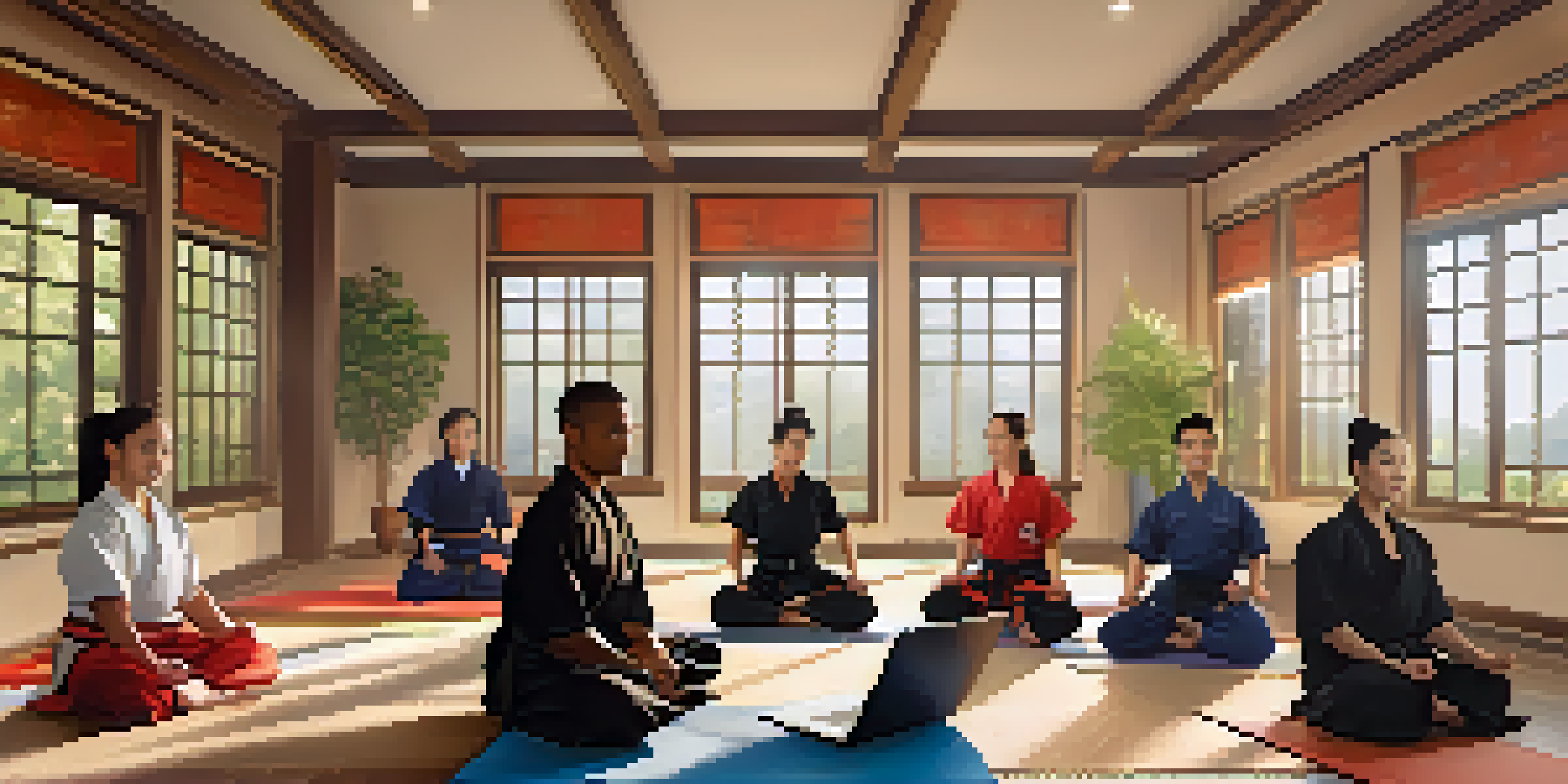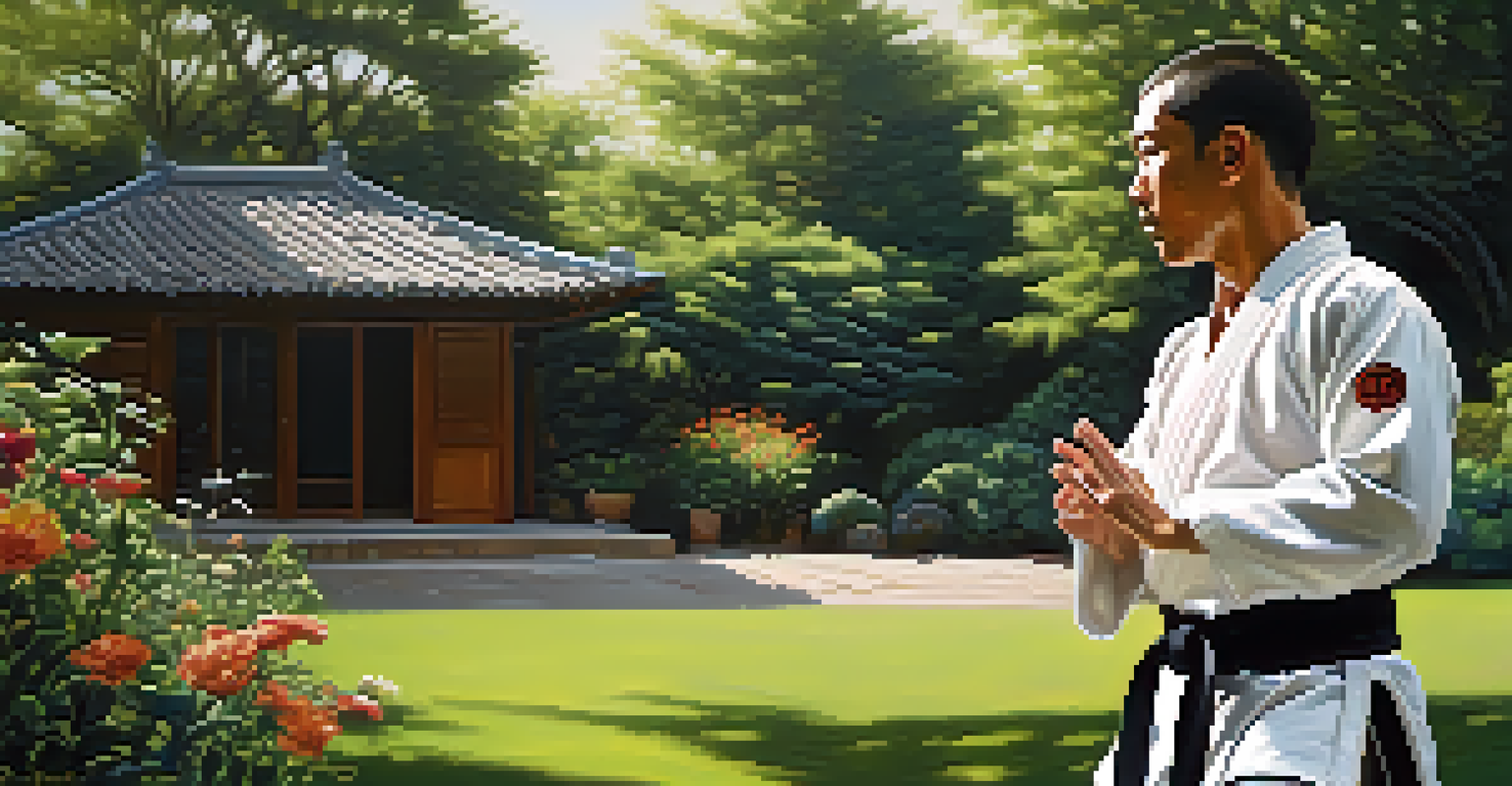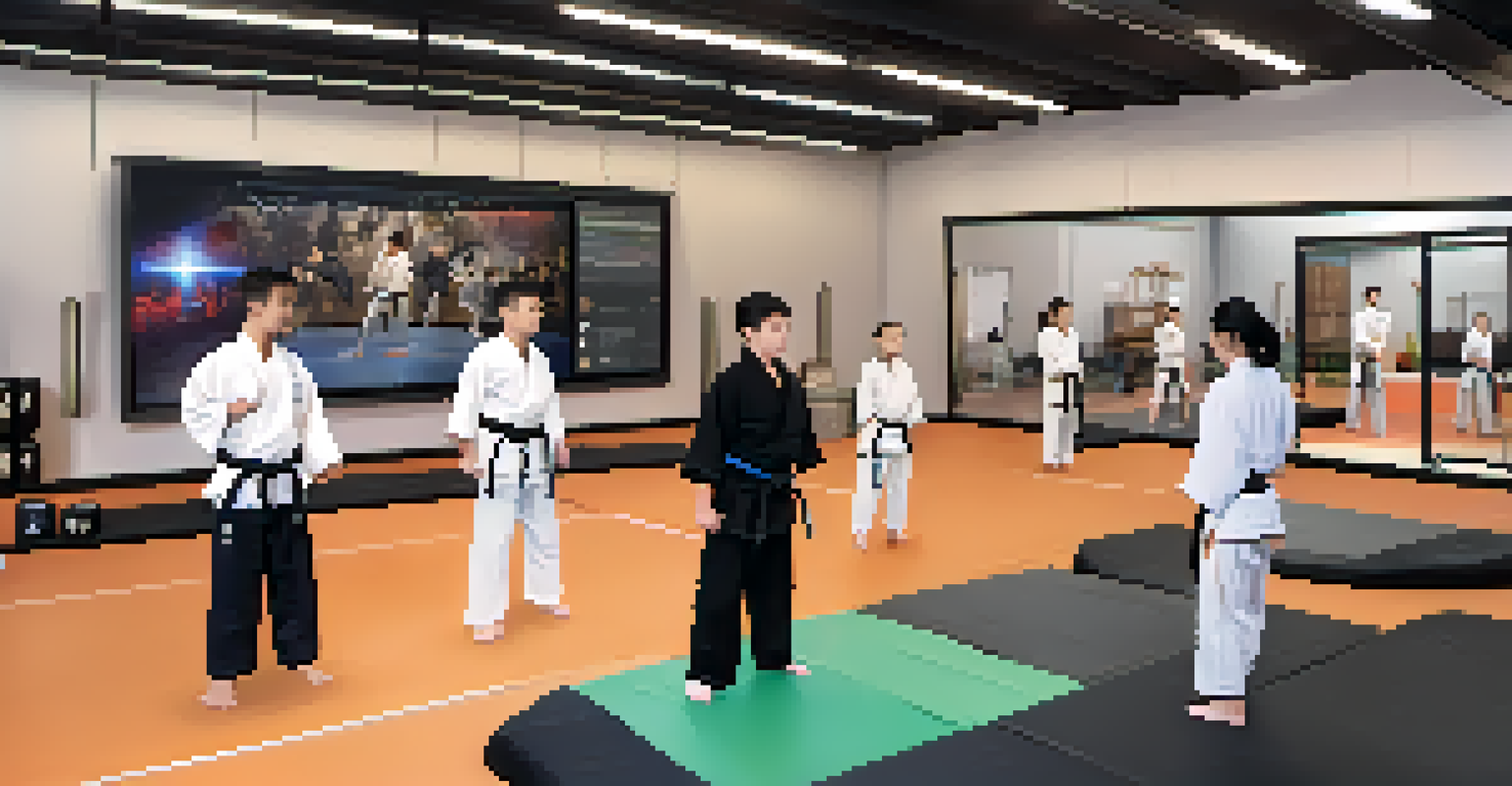The Rise of Online Martial Arts Classes During the Pandemic

The Shift to Online Learning in Martial Arts
As the pandemic forced gyms and studios to close, many martial arts instructors quickly pivoted to online platforms. This shift allowed them to continue teaching and stay connected with their students. Online classes became a lifeline, not just for fitness but for maintaining community during isolation.
The only limit to our realization of tomorrow will be our doubts of today.
Students who once trained in-person found themselves logging into classes from their living rooms or backyards. The convenience of online training opened doors for those who might have hesitated to join traditional classes. It also provided access to top instructors who were previously out of reach.
While some may have been skeptical of an online format, many quickly discovered that virtual classes could be just as engaging and effective. With the right technology and motivation, students adapted to the new environment, proving that dedication can thrive even in challenging times.
Benefits of Online Martial Arts Classes
One of the significant advantages of online martial arts classes is flexibility. Students can choose from a variety of time slots, making it easier to fit training into their busy schedules. This flexibility has allowed many people to maintain a consistent practice that might have been difficult with traditional classes.

Additionally, online classes often feature diverse offerings. Students can explore different styles and disciplines without being limited to their local dojo. This exposure can enrich their martial arts journey and help them find new passions.
Online Martial Arts Gained Popularity
The pandemic forced martial arts instructors to adapt to online platforms, allowing them to continue teaching and maintain community connections.
Moreover, the comfort of training at home can ease anxiety for beginners. Many students reported feeling less intimidated and more willing to try new techniques when they weren't in a crowded studio. This nurturing environment encourages learning and personal growth.
Challenges Faced by Online Martial Arts Schools
Despite the many benefits, the transition to online classes wasn't without its challenges. Technical difficulties, such as poor internet connections or software glitches, often disrupted lessons. Instructors had to adapt quickly, finding solutions to keep classes running smoothly and maintain student engagement.
In the middle of difficulty lies opportunity.
Another challenge was the lack of physical interaction. Martial arts often rely on partner drills and hands-on instruction, which can be difficult to replicate virtually. Instructors had to get creative, using props or demonstrating techniques that students could practice solo.
As a result, many schools began incorporating hybrid models, blending online and in-person training. This approach allowed for more personalized feedback while still offering the flexibility of virtual classes. Adjusting to this new format has been a learning curve for both instructors and students alike.
The Role of Technology in Online Martial Arts Training
Technology played a crucial role in the success of online martial arts classes. Platforms like Zoom and YouTube became essential tools for instructors to connect with students. These technologies not only facilitated live classes but also allowed for the sharing of recorded sessions for later viewing.
Many instructors embraced social media to build a sense of community, sharing tips, tutorials, and motivational content. This engagement helped students stay connected and inspired, fostering a supportive environment even when they were physically apart.
Flexibility and Diversity in Training
Online classes offer students the flexibility to train at their convenience and explore various martial arts styles without local limitations.
Moreover, advancements in wearable technology began to integrate into training, offering real-time feedback on performance. These innovations added a new dimension to online classes, enabling students to track their progress and set personal goals more effectively.
Student Experience and Adaptation
The experience of students during this shift varied widely, with many embracing the change while others struggled. For those who adapted quickly, online classes provided a fresh and exciting way to train. They found joy in discovering new techniques and connecting with peers through virtual platforms.
However, some students missed the camaraderie and energy of in-person classes. The lack of physical presence could make it difficult to stay motivated, leading some to drop off. Instructors recognized this challenge and implemented strategies to keep students engaged, such as virtual competitions and challenges.
Ultimately, the adaptability of students and instructors alike highlighted the resilience of the martial arts community. Many emerged stronger and more connected, proving that passion for martial arts can flourish in any environment.
The Future of Martial Arts Training
As the world begins to open up again, the future of martial arts training is likely to embrace a hybrid model. Many students appreciate the convenience of online classes while also valuing the benefits of in-person training. This blended approach could offer the best of both worlds, catering to a wide range of preferences.
Instructors are likely to continue investing in technology to enhance the learning experience. Innovations in virtual reality and interactive platforms could further elevate online training, making it even more engaging and effective.
Hybrid Models for Future Training
The future of martial arts training is likely to embrace hybrid models that combine both online and in-person classes, catering to diverse student preferences.
Ultimately, the pandemic has reshaped the landscape of martial arts training, creating new opportunities for learning and connection. The community has proven to be adaptable and innovative, ensuring that martial arts will continue to thrive in whatever form it takes.
Conclusion: Embracing Change in Martial Arts
The rise of online martial arts classes during the pandemic reflects a broader trend of adaptability in the face of change. While the challenges were significant, the community's response showcased resilience and creativity. Instructors and students alike found ways to continue their journeys, proving that martial arts is more than just physical training—it's a way of life.
As we look to the future, it's clear that the lessons learned during this time will shape the evolution of martial arts training. By embracing technology and fostering community, the martial arts world can continue to grow and thrive, no matter the circumstances.

Ultimately, whether training online or in-person, the spirit of martial arts—discipline, respect, and perseverance—remains at the core. As we move forward, let’s carry these values with us, ensuring that the martial arts community remains strong and united.